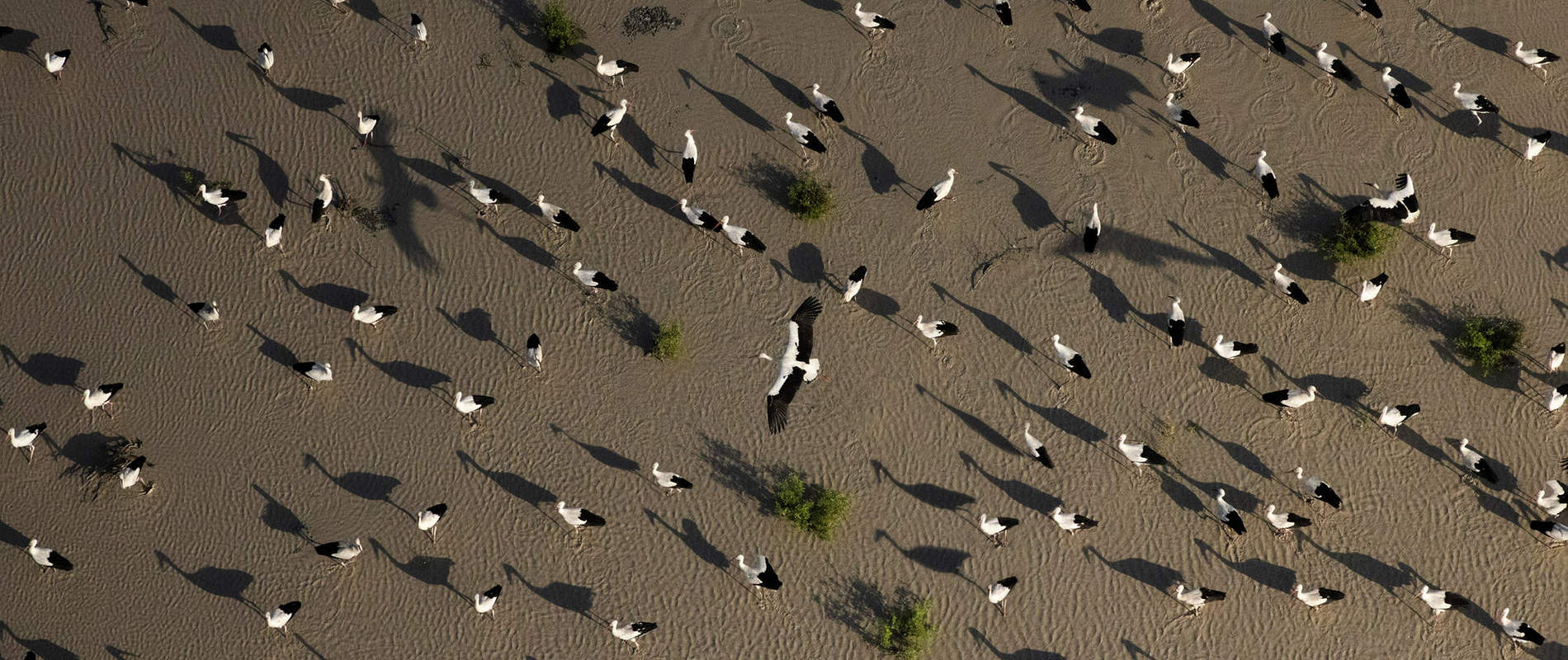No fresh poaching activity was observed during aerial patrols in February. However, several shooting platforms, shooting blinds, and poacher’s hideouts were spotted during helicopter patrols.
While some of these were old, several were recent. All were destroyed, along with cooking utensils and a water container that were found in the one shooting blind. One fireplace of indeterminate age was also spotted during a routine fixed-wing patrol in Tsavo West.
Despite not seeing any fresh poaching activity, a number of injured elephants — victims of poaching attempts — were sighted during fixed-wing patrols. Four elephants were found with suspected arrow or spear wounds. Three of these required helicopter assistance to dart and treat, and the fourth was in an open area where the vet was able to approach and dart from a vehicle.

Two more cases involved aerial assistance, including one bull elephant on Kulalu Ranch that had been observed lying down behaving strangely for several days. After being located from the air, it was discovered that he also had an injury to the trunk. A vet was flown to the area to dart him from a helicopter. Upon inspection, the trunk injury was determined to be relatively old and required light treatment. It remains unclear what caused the behavioural changes, but the elephant was revived without incident.
Another young bull elephant was reported near Kiboko suffering from a snare. The elephant was darted from a helicopter and the snare successfully removed before the wound was treated by the vet.

Two elephant carcasses and one giraffe carcass were sighted from the air. The elephants were both assumed to have died of natural causes, as their ivory was present. Coordinates were provided to KWS to retrieve the tusks. The giraffe, however, was possibly a poaching victim. He was located along the park boundary.
Human-elephant conflict cases were relatively few, with only two groups of 'problem elephants attended to in five separate incidents. One small group of three elephants has been earmarked for translocation due to the difficulty in pushing them back into the park with the helicopter. The other group of eight was successfully pushed out of the community and back into the fence with the helicopter.

The livestock situation continues to improve in Tsavo East and West, especially when compared to the same time in previous years. There were several small to medium livestock incursions throughout the month, which were detected early by aerial surveillance and dealt with swiftly by KWS teams on the ground. With some exceptions, incursions were generally of smaller herds of cattle and more dispersed than usual.
Some other illegal activities sighted in February included logging in both Northern Tsavo East National Park as well as the Shimba Hills National Reserve. Logging was for posts, timber, and charcoal. Also sighted was the illegal cultivation of maize occurring along the lower extremities of the Tiva River near where it exits the Eastern side of the park.

A highlight of the month were multiple sightings of sable antelope in the Shimba Hills, which represents the only population of the critically endangered species in Kenya. The newly completed Shimba Hills fenceline, which was installed by SWT to mitigate human-wildlife conflict and prevent poaching and other illegal activities, will further protect the vulnerable sable.
Along the Tiva River, our pilots have been pleased to see an increase in wild dog sightings. Last year, widespread disease among wild dogs led to a park-wide population reduction. Another special sighting was a newborn rhino in Tsavo East National Park. There had been speculation that the calf’s mother had given birth, after her previous calf was spotted alone.

While it is typical to see large numbers of elephants on aerial patrols, our pilots all noted large herds in some of the more remote areas of the park, which are only accessible to elephants during and shortly after the rainy season, when there is ample surface water to support them. This is a hugely encouraging sign.
